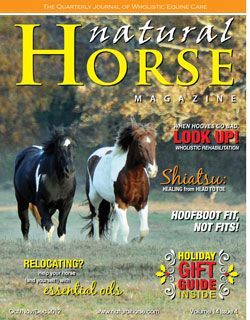 Wanna know how many calories your horse is getting from the feed you’re giving him?
Wanna know how many calories your horse is getting from the feed you’re giving him?
Check this out from Infovets.com:
Converting crude fiber on a feed tag to digestible energy (DE) Mcal/lb: Many feed tags do not contain the actual DE; therefore, it is often necessary to use the crude fiber and crude fat percentages to determine the DE (Mcal/lb) of the grain mix. Use the following table to help make the conversion:
Table #6 – Relationship of crude fiber to expected digestible energy in conventional and fat added grain mixes:
|
Crude fiber indicated on feed tag |
If crude fat on tag is <3% |
If crude fat on tag is approximately 8% |
|
4 |
1.55 |
1.65 |
|
6 |
1.45 |
1.55 |
|
8 |
1.35 |
1.45 |
|
10 |
1.25 |
1.35 |
|
12 |
1.15 |
1.25 |
So, let’s take the feed that has fiber of 4 and fat that is 3%. (Highlighted in chart).
For every pound of that feed your horse is getting 1.55 X 1000 (Mcal) or, 1550 calories.
The average horse, at rest (not working), generally needs about 15,000 calories a day to maintain. A working horse in hard work may need at least double that or 30,000 calories a day.
Hope this is helpful to you!











Now add that to the HAY you’re feeding:
TIMOTHY/GRASS approx. 800 calories per lb.
ALFALFA approx. 900 – 1000 calories per lb.
You should come up with at least 15,000 calories a day for a standard sized light horse in maintenance only.
Remember, too, that for ever 10 degree F BELOW 35* your horse will need an additional lb. of hay per day to make up the extra calories he’s using to stay warm.